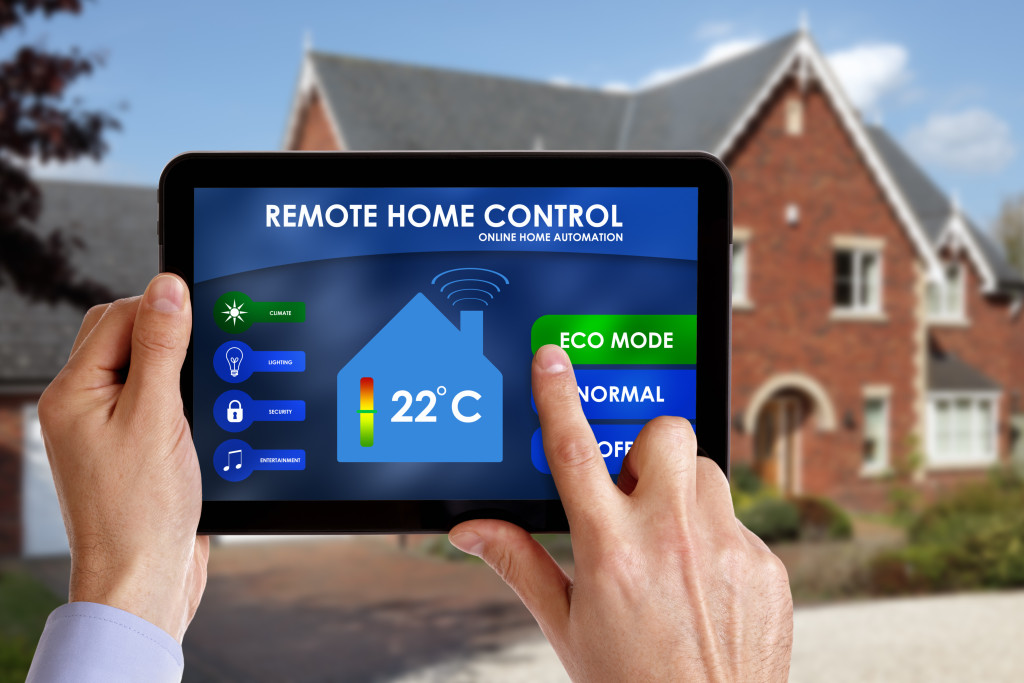- Automation simplifies daily tasks, enhances efficiency, and significantly saves energy in residential settings.
- Smart security systems ensure round-the-clock home safety, including intruder detection and remote surveillance.
- Automated entry points like gates and garages offer convenience and heightened security, while smart doors enhance accessibility.
- Smart features like thermostats and automatic lighting allow businesses to increase efficiency and reduce costs.
Automation brings a multitude of benefits to daily life. It optimizes household tasks and increases efficiency and precision in our work. A study by McKinsey estimates that automation could raise productivity growth globally by 1.4 percent annually. Automated systems in homes not only provide convenience but also contribute to energy savings. You can save up to 10% yearly on heating and cooling by simply lowering your thermostat back 7°-10°F for 8 hours per day from its standard setting. Consequently, these benefits increase comfort, savings, and time efficiency, making automation an excellent choice for home improvements.
However, you might not know the applications of a fully automated home. Smart automation can be used for various tasks. Here are a few examples of improvements you can make in your home through automation:
Smart Security System

A smart security system is the cornerstone of a safe and secure home. With rising concern over security, installing an intelligent system has become indispensable. It ensures the safety of your premises by deterring potential threats and providing real-time alerts in case of unusual activities. Moreover, they offer peace of mind, knowing your home is protected round-the-clock, even when you’re away.
Intruder Detection
The ability to accurately detect unauthorized entry is a crucial feature to consider. Advanced systems come equipped with motion detectors and door/window sensors, immediately notifying you if an intruder tries to break in.
Remote Surveillance
With remote surveillance capabilities, you can monitor your home from anywhere. These systems generally include Wi-Fi-enabled cameras, allowing homeowners to monitor their property through a smartphone app.
Smart Alarms
Smart alarms are another feature to consider. These alarms alert you and the local authorities in emergencies like break-ins or fires, ensuring timely response.
Integration with Smart Home Devices
Lastly, ensure the security system is compatible with other smart home devices. A system seamlessly integrating with your smart locks, lights, or thermostats will provide enhanced convenience and a comprehensive home automation experience.
Automated Entry Points

Automated entry points are advantageous to any smart home system, offering convenience and improved security. For instance, automatic gates are a perfect example of this fusion, providing a seamless, touchless entry and bolstering the home’s security profile. The automatic gate system can be optimally programmed to detect authorized cars, eliminating the need to open the gate while physically keeping unauthorized vehicles at bay.
Similarly, automated garages are another excellent application of this technology. They offer the ease of entering and exiting without manually operating the garage door and ensure the garage is securely locked when not in use. Additionally, many automated garage systems are equipped with security features that alert homeowners of unauthorized access.
Motion-sensor doors are also becoming increasingly popular in commercial settings and homes. These doors offer a hands-free solution to entry and exit points within the house, which enhances accessibility for those with physical limitations. Moreover, they contribute to energy savings by ensuring doors are not unintentionally open, thereby maintaining the home’s temperature.
Smart Home Features
Smart home features aren’t just beneficial for households. They’re equally advantageous for businesses. They present a lucrative opportunity to increase efficiency, reduce costs, and promote a more sustainable work environment.
For instance, smart thermostats are an excellent investment for businesses. They provide precise control over the building’s heating and cooling systems, leading to substantial energy savings. They can learn the business’s schedule and adjust the temperature accordingly, ensuring optimal comfort levels during working hours and scaling back to save energy when the building is unoccupied. Moreover, remote control capabilities allow adjustments to be made anytime from anywhere, adding convenience and flexibility.
Similarly, automatic lighting is another smart feature that businesses can benefit from. Occupancy or motion sensor lights ensure that lights are only on when needed, preventing wastage of electricity. This cuts down energy consumption and reduces the cost associated with lighting. Furthermore, smart lights can also be programmed to dim or switch off during times of ample natural light, thereby maximizing daylight usage and saving even more energy.
Final Thoughts
As technology advances, it’s becoming increasingly clear that automation is the way forward. It improves quality of life and has tremendous potential for cost savings and efficiency in residential and commercial settings. By incorporating smart features into homes, you can create a more sustainable, secure, and convenient environment for yourself and future generations.

